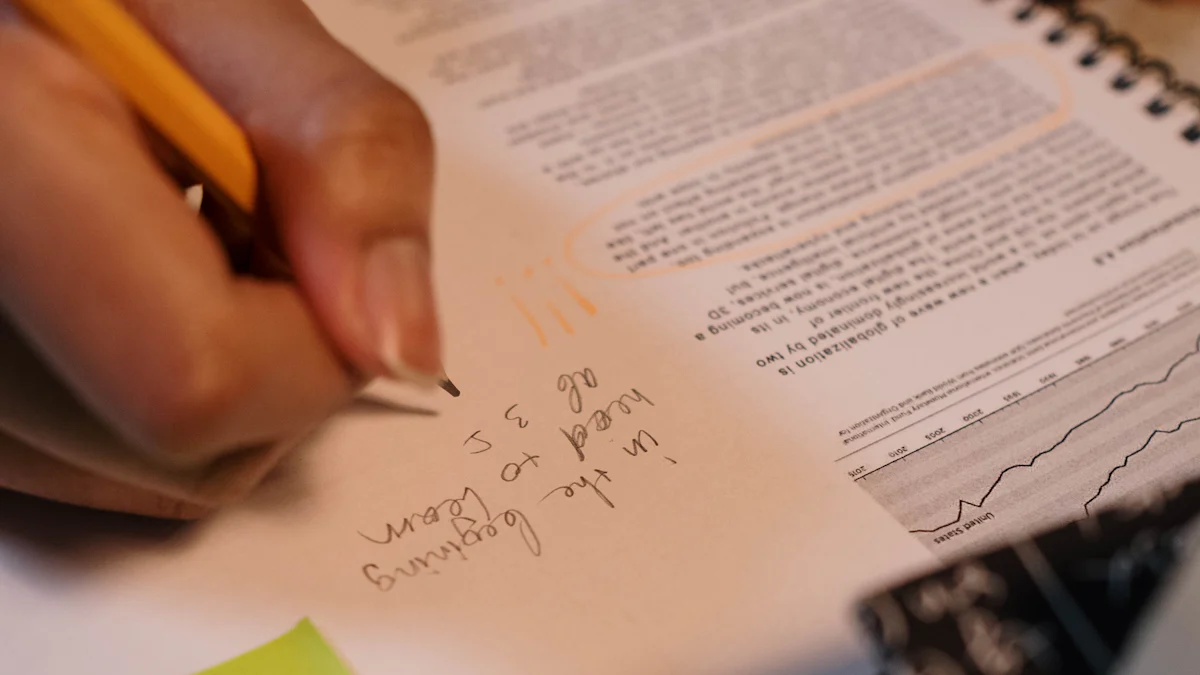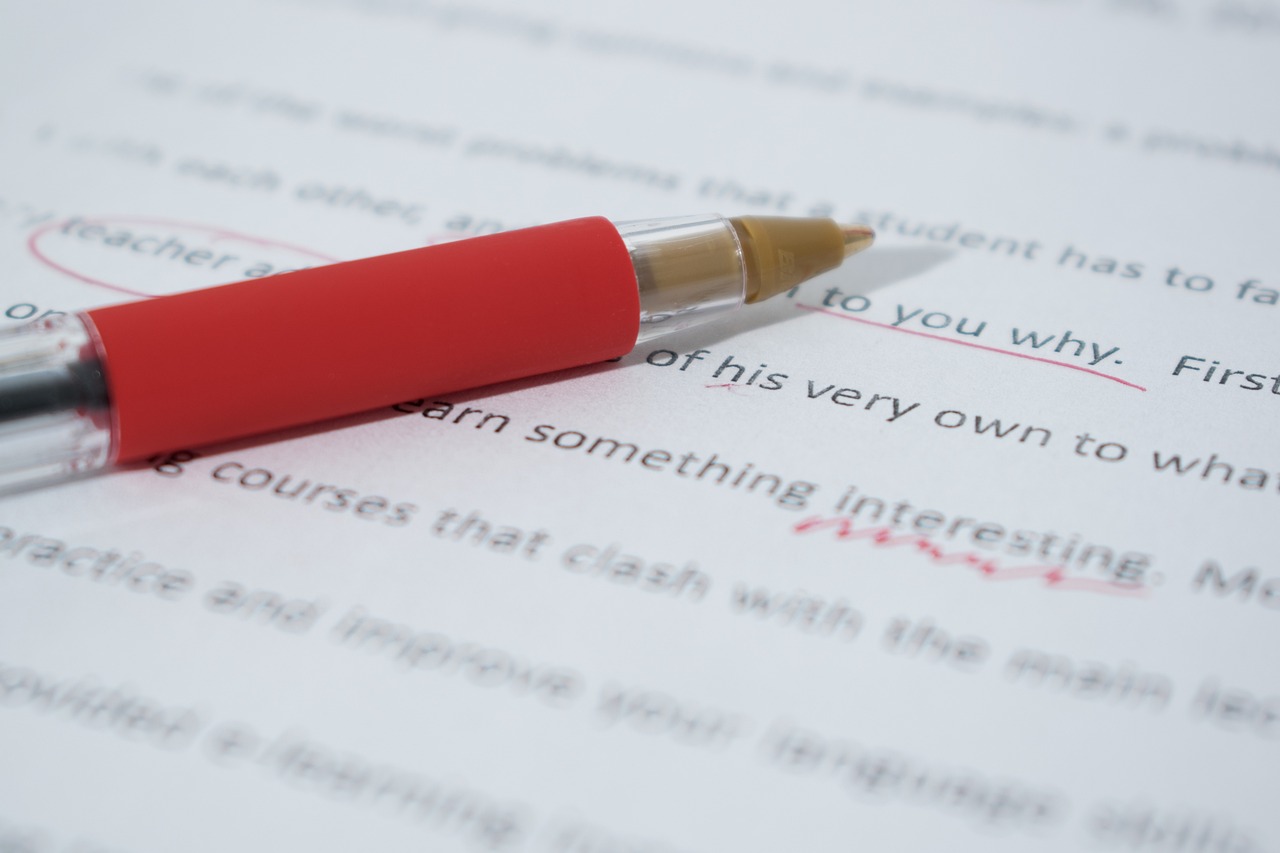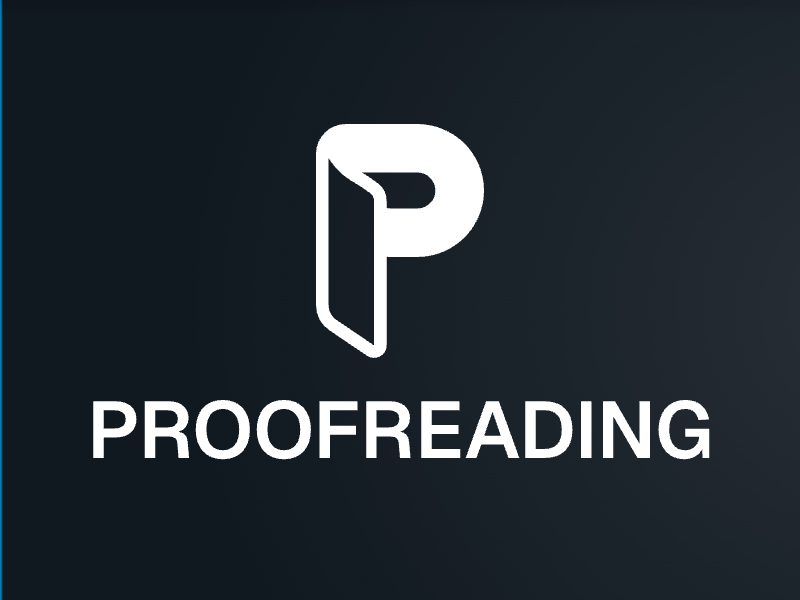The Role of Proofreading in Academic Writing Success

Proofreading and Editing in Journalism serve as the essential final step in academic writing. It ensures your work achieves the highest level of quality by eliminating errors in grammar, spelling, and punctuation. This process enhances the clarity of your ideas, making your arguments easier to understand. A well-proofread paper reflects professionalism and attention to detail, which can significantly improve your academic performance. By refining your content, proofreading and editing in journalism not only boost coherence but also demonstrate your commitment to producing polished and accurate work. Tools like Proofreading AI can simplify this process, ensuring your writing meets academic standards effortlessly.
Key Takeaways
Proofreading is essential for eliminating errors in grammar, spelling, and punctuation, enhancing the clarity and professionalism of your academic work.
A well-proofread paper can significantly improve your grades and academic recognition by ensuring your ideas are communicated clearly and accurately.
Utilizing tools like Proofreading AI can streamline the proofreading process, helping you identify errors quickly and maintain academic standards.
Reading your work aloud and taking breaks can help you catch mistakes and approach your text with fresh eyes, improving your proofreading effectiveness.
Understanding the difference between proofreading and editing is crucial; proofreading focuses on surface-level errors while editing addresses overall structure and coherence.
Consistently applying style guides during proofreading ensures uniformity in formatting and citation, enhancing the professionalism of your writing.
Seeking feedback from peers or professional proofreaders can provide valuable insights and help you identify issues you might overlook.
Understanding Proofreading and Its Role in Academic Writing
What is Proofreading?
Definition and purpose of proofreading in academic writing.
Proofreading serves as the final step in refining your academic work. It involves carefully reviewing your writing to identify and correct errors in grammar, spelling, punctuation, and formatting. This process ensures that your ideas are communicated clearly and professionally. In academic writing, proofreading is essential for maintaining high standards and achieving your academic goals. By eliminating mistakes, you enhance the readability and credibility of your work, which can significantly impact your grades and academic recognition.
According to scientific-publishing.webshop.elsevier.com, effective proofreading ensures clear communication and prevents misunderstandings in academic and professional documents. This clarity is crucial for producing high-quality work that meets academic expectations.
Differentiating proofreading from editing: macro editing vs. micro editing.
Proofreading and editing are often confused, but they serve distinct purposes. Editing focuses on improving the overall structure, flow, and coherence of your writing. It involves making substantial changes to content, such as reorganizing paragraphs or refining arguments. This process is known as macro editing. Proofreading, on the other hand, is a micro-level task. It addresses surface-level issues like typos, grammatical errors, and formatting inconsistencies.
For example:
Macro Editing: Ensuring your argument follows a logical sequence and aligns with your thesis.
Micro Editing (Proofreading): Correcting a misplaced comma or fixing a spelling error.
Both processes are vital, but proofreading acts as the final polish that ensures your work is error-free and ready for submission.
Why is Proofreading Important?
Ensuring clarity, coherence, and factual accuracy in academic work.
Proofreading guarantees that your writing is clear and coherent. It helps you identify awkward phrasing, unclear sentences, and factual inaccuracies. When your ideas are presented logically and without errors, readers can easily understand your arguments. This clarity is especially important in academic writing, where precision and professionalism are expected.
A study highlighted by proofreadingmalaysia.com emphasizes that proofreading enhances the clarity and coherence of research papers, increasing their chances of academic recognition and publication.
Preventing plagiarism and maintaining ethical standards.
Proofreading also plays a critical role in preventing plagiarism. By reviewing your citations and references, you ensure that all sources are properly credited. This step helps you maintain ethical standards in your academic work. Additionally, proofreading allows you to verify the accuracy of your data and arguments, further strengthening the integrity of your writing.
As noted by academicproofreading.net, proofreading not only eliminates errors but also ensures adherence to academic standards, which is essential for achieving your academic goals.
Incorporating tools like Proofreading AI can simplify this process. These tools help you identify errors quickly and ensure your writing adheres to academic guidelines. By using such resources, you can save time and focus on improving the quality of your content.
The Benefits of Proofreading in Academic Writing

Enhancing Academic Performance
Research evidence on grade improvements through proofreading.
Proofreading has a direct impact on your academic performance. Studies reveal that students who proofread their work achieve higher grades compared to those who skip this step. By identifying and correcting errors, you ensure that your writing meets academic standards. This process refines your arguments and strengthens the overall quality of your submissions.
According to research highlighted by academicproofreading.net, proofreading improves the clarity and coherence of academic papers, which often leads to better evaluations from instructors.
Using tools like Proofreading AI can make this process more efficient. These tools help you spot errors quickly, saving time while ensuring your work is polished and professional. When you submit error-free assignments, you demonstrate your dedication to excellence, which professors value highly.
Building trust and credibility in academic submissions.
Proofreading enhances the credibility of your academic work. Submitting a well-proofread paper shows that you care about accuracy and professionalism. This attention to detail builds trust with your readers, whether they are professors, peers, or academic reviewers. Clear and error-free writing reflects your commitment to producing high-quality work.
When you proofread, you also verify the accuracy of your data and arguments. This step ensures that your content is not only grammatically correct but also factually reliable. Tools like Proofreading AI can assist you in maintaining this level of precision, helping you establish a strong reputation in academic circles.
Improving Writing Skills
Strengthening grammar, language, and logical thinking.
Proofreading is not just about fixing mistakes; it is also a learning opportunity. By reviewing your work carefully, you become more aware of your grammar and language usage. This awareness helps you identify patterns in your writing, such as recurring errors or awkward phrasing. Over time, this practice strengthens your command of grammar and improves your ability to construct clear and logical sentences.
Proofreading also sharpens your critical thinking skills. As you evaluate your writing, you learn to assess the flow of your arguments and the effectiveness of your word choices. This process enhances your ability to communicate ideas clearly and persuasively.
Developing sensitivity to tone, voice, and style.
Proofreading allows you to refine the tone and voice of your writing. Academic work requires a formal and objective tone, but it should also reflect your unique perspective. By reviewing your work, you can ensure that your tone aligns with the expectations of your audience while maintaining your personal voice.
Additionally, proofreading helps you develop a keen eye for style consistency. You learn to maintain uniformity in formatting, punctuation, and word usage. Tools like Proofreading AI can assist in this area by providing suggestions that align with academic style guides. This attention to detail enhances the overall readability and professionalism of your writing.
Practical Tips for Effective Proofreading

Strategies for Efficient Proofreading
Reading aloud to identify errors and awkward phrasing.
Reading your work aloud is a powerful way to catch mistakes. When you hear your words, you can identify awkward phrasing, missing words, or sentences that lack clarity. This method forces you to slow down and focus on each word, making it easier to spot errors that your eyes might skip over. Experts emphasize that effective proofreading enhances the readability of your writing, and reading aloud is one of the simplest ways to achieve this.
Taking breaks to approach the text with fresh eyes.
Stepping away from your work before proofreading can significantly improve your effectiveness. A short break allows you to return with a fresh perspective, making it easier to notice errors or inconsistencies. When you proofread immediately after writing, your familiarity with the content may cause you to overlook mistakes. By taking breaks, you reset your focus and improve your ability to spot issues in grammar, punctuation, and structure.
Focusing on one type of error at a time.
Proofreading becomes more manageable when you concentrate on one type of error during each pass. For example, you can first check for spelling mistakes, then review punctuation, and finally focus on formatting. This targeted approach ensures thoroughness and reduces the chances of missing errors. Breaking the process into smaller tasks also makes it less overwhelming, allowing you to maintain focus and accuracy.
Leveraging Tools and Resources
Using spell-checkers and grammar tools carefully.
Digital tools like spell-checkers and grammar software can be valuable aids in proofreading. These tools quickly identify common errors, saving you time and effort. However, relying solely on them can be risky. Automated tools may not catch context-specific mistakes or subtle nuances in language. Use them as a starting point, but always review their suggestions critically. As one expert notes, proofreading ensures your writing is error-free and professional, and tools should complement, not replace, your efforts.
Referring to style guides for consistency (e.g., AP Stylebook, MLA, Chicago Manual of Style).
Style guides are essential for maintaining consistency in academic writing. They provide clear rules for formatting, punctuation, and citation, ensuring your work adheres to academic standards. Whether you use the AP Stylebook, MLA, or Chicago Manual of Style, these resources help you refine your writing and avoid errors. Consistency in style enhances the professionalism of your work and demonstrates your attention to detail.
Seeking external help from peers or professional proofreaders.
Sometimes, a fresh set of eyes can catch errors you might miss. Asking a peer or professional proofreader to review your work can provide valuable insights. They can identify issues with clarity, coherence, or tone that you may overlook. Professional proofreaders bring expertise to the table, ensuring your writing meets the highest standards. Tools like Proofreading AI can also serve as an additional layer of support, offering quick and reliable suggestions to enhance your work.
"Effective proofreading is absolutely vital to the production of high-quality scholarly and professional documents." This statement underscores the importance of combining strategies, tools, and external feedback to achieve polished and professional writing.
Overcoming Common Challenges in Proofreading
Identifying and Addressing Personal Weaknesses
Recognizing patterns of common mistakes.
Proofreading becomes more effective when you understand your recurring errors. By analyzing past work, you can identify patterns in your mistakes. For instance, you might frequently misuse punctuation or struggle with subject-verb agreement. Recognizing these tendencies allows you to focus on specific areas during proofreading. This targeted approach not only improves your writing but also saves time.
"Proofreading involves reading your document to correct smaller errors," as noted by Instructional Solutions. This process helps you refine your work and present it in the best possible light. Tools like Proofreading AI can assist in identifying these patterns by highlighting repeated issues, making the process more efficient.
Learning from feedback and past errors.
Feedback is a valuable resource for improving your proofreading skills. When instructors or peers point out errors, take note of them. Use this feedback to avoid repeating the same mistakes in future work. Reviewing corrected assignments can also help you understand where you went wrong. This practice builds your awareness and sharpens your attention to detail.
According to Editage, "Proofreading is crucial for polishing research papers and building a professional image." Learning from past errors ensures that your writing reflects professionalism and accuracy. Incorporating tools like Proofreading AI can further enhance this process by providing real-time suggestions tailored to your needs.
Managing Time and Focus
Allocating sufficient time for proofreading.
Rushing through proofreading often leads to overlooked errors. Allocate dedicated time for this step to ensure thoroughness. Break your work into sections and proofread each part separately. This method prevents fatigue and helps you maintain focus. Prioritizing proofreading in your schedule demonstrates your commitment to producing high-quality work.
Proof-Reading-Service emphasizes that "Proofreading is important for reaching readers and ensuring successful communication." By setting aside enough time, you can ensure that your writing is clear, coherent, and error-free.
Proofreading during peak alertness hours.
Your mental state significantly impacts the quality of your proofreading. Choose a time when you feel most alert and focused. For many, this might be early in the morning or after a short break. Avoid proofreading when you're tired, as this can lead to missed errors. A well-rested mind is more likely to catch subtle mistakes and inconsistencies.
Academic Proofreading highlights that "Proofreading is essential to present your work in the best possible light." By proofreading during peak alertness hours, you maximize your ability to identify and correct errors effectively. Tools like Proofreading AI can complement this effort by providing additional support, ensuring your work meets academic standards.
The Connection Between Proofreading and Editing in Journalism
Macro Editing vs. Micro Editing
Ensuring structural integrity and logical flow in writing.
Proofreading and editing in journalism require a clear understanding of how ideas are structured. Macro editing focuses on the big picture. It ensures that your writing follows a logical sequence and that each section connects seamlessly to the next. This process involves evaluating the overall organization of your content. For example, you might rearrange paragraphs to improve the flow of your argument or eliminate redundant sections to maintain focus.
Strong structural integrity makes your writing easier to follow. Readers can grasp your main points without confusion. In journalism, this clarity is essential for delivering accurate and impactful stories. By addressing structural issues during macro editing, you create a foundation for effective communication.
Refining language, grammar, and tone for clarity and coherence.
Micro editing, often referred to as proofreading, deals with the finer details of your writing. This step involves correcting errors in grammar, punctuation, and spelling. It also ensures that your tone remains consistent and appropriate for your audience. For instance, journalistic writing often requires a neutral and objective tone, while academic writing may demand a more formal approach.
Refining language enhances the readability of your work. Clear and concise sentences help readers engage with your content. Proofreading and editing in journalism ensure that your message is not only error-free but also polished and professional. Tools like Proofreading AI can assist in this process by identifying subtle mistakes and offering suggestions to improve clarity.
The Role of Style Guides in Proofreading
Maintaining consistency in formatting, punctuation, and usage.
Style guides play a crucial role in maintaining consistency in your writing. They provide standardized rules for formatting, punctuation, and word usage. For example, The AP Stylebook is widely used in journalism to ensure uniformity across publications. Following these guidelines helps you present your work in a professional and cohesive manner.
Consistency builds trust with your audience. When your writing adheres to established standards, it reflects attention to detail and credibility. Proofreading ensures that your work aligns with the chosen style guide, eliminating inconsistencies that could distract readers. Whether you are writing a news article or an academic paper, style guides serve as valuable resources for achieving precision.
Examples of style guides: AP Stylebook, The New York Times Manual of Style and Usage, and sensitivity guides.
Several style guides are available to suit different types of writing. The AP Stylebook is a staple in journalism, offering clear rules for grammar, punctuation, and usage. The New York Times Manual of Style and Usage provides additional guidance for journalistic writing, emphasizing clarity and accuracy. Sensitivity guides, such as those addressing inclusive language, help writers navigate complex topics with care and respect.
Using these resources enhances the quality of your writing. They ensure that your work meets professional standards and resonates with your audience. Proofreading and editing in journalism become more effective when you incorporate style guides into your process. Tools like Proofreading AI can further simplify this task by offering real-time suggestions based on these guidelines.
"Proofreaders evolved a set of annotations to communicate changes clearly and efficiently, which are now mostly considered obsolete." While traditional proofreading marks have faded, modern tools like Proofreading AI have revolutionized the process, making it faster and more accessible.
Proofreading plays a vital role in academic writing by ensuring your work is polished and professional. It enhances clarity, coherence, and accuracy, which are essential for achieving academic success. By eliminating errors and refining grammar, you improve the readability and quality of your documents. This process not only boosts your grades but also builds a strong professional image. Adopting effective strategies and tools like Proofreading AI can simplify the task, making it more efficient and impactful. With consistent practice, you can transform your writing and achieve your academic goals.
FAQ
Why is proofreading essential in academic writing?
Proofreading ensures your academic work is polished and error-free. It eliminates mistakes in grammar, spelling, and punctuation, enhancing the clarity and professionalism of your writing. A well-proofread document communicates your ideas effectively and meets the high standards expected by academic institutions. Without proofreading, even strong arguments can lose credibility due to typos or awkward phrasing.
"No author creates a perfect text without reviewing, reflecting on, and revising what they have written," as highlighted by experts. Proofreading is a critical step in this process.
How does proofreading improve your chances of publication?
Proofreading increases the quality of your manuscript, making it more likely to be accepted by academic journals. It ensures your work adheres to formatting guidelines, eliminates inconsistencies, and refines your arguments. Editors and reviewers value clear, professional writing. By proofreading, you demonstrate attention to detail and commitment to excellence.
A doctoral candidate with a well-researched dissertation may face rejection if their work contains typos or formatting errors. Proofreading eliminates these issues, ensuring your content appears credible and professional.
What is the difference between proofreading and editing?
Editing focuses on improving the structure, flow, and coherence of your writing. It involves reorganizing content and refining arguments. Proofreading, on the other hand, addresses surface-level issues like grammar, punctuation, and spelling errors. While editing shapes the overall content, proofreading provides the final polish to ensure your work is submission-ready.
Think of editing as building the framework of a house and proofreading as applying the finishing touches to make it presentable.
Can proofreading help prevent plagiarism?
Yes, proofreading helps you verify that all sources are properly cited and referenced. It ensures your work adheres to ethical standards by eliminating accidental plagiarism. By reviewing your citations and cross-checking your references, you maintain academic integrity and avoid potential issues with originality.
Academic proofreading not only enhances clarity but also ensures adherence to ethical guidelines, which is crucial for maintaining credibility.
How can proofreading improve your grades?
Proofreading refines your writing, making it clear and error-free. Professors value submissions that demonstrate professionalism and attention to detail. By eliminating mistakes and improving readability, proofreading helps you present your ideas effectively, which often leads to higher grades.
Research shows that students who proofread their work achieve better evaluations from instructors, as their writing meets academic standards.
What tools can assist with proofreading?

Tools like Proofreading AI simplify the proofreading process. They identify errors in grammar, spelling, and punctuation quickly and accurately. These tools also provide suggestions for improving sentence structure and style. While they cannot replace human judgment, they serve as valuable aids in ensuring your work is polished and professional.
"Effective proofreading is vital for producing high-quality scholarly documents," and tools like Proofreading AI make this task more efficient.
How does proofreading enhance your writing skills?
Proofreading helps you recognize patterns in your mistakes, such as recurring grammatical errors or awkward phrasing. By addressing these issues, you improve your command of language and develop stronger writing habits. Over time, this practice enhances your ability to construct clear and logical sentences.
Proofreading sharpens your critical thinking and attention to detail, skills that are invaluable in both academic and professional settings.
When is the best time to proofread?
The best time to proofread is when you feel alert and focused. Avoid proofreading immediately after writing, as familiarity with the content may cause you to overlook errors. Taking a break allows you to approach your work with fresh eyes, making it easier to spot mistakes.
Experts recommend proofreading during peak alertness hours to maximize accuracy and effectiveness.
Should you seek external help for proofreading?
Yes, seeking external help can provide a fresh perspective on your work. Peers or professional proofreaders can identify issues you might miss, such as unclear arguments or inconsistent tone. Professional services bring expertise, ensuring your writing meets the highest standards.
Combining personal effort with external feedback enhances the quality of your work. Tools like Proofreading AI can also complement this process by offering real-time suggestions.
How can style guides aid in proofreading?
Style guides, such as the AP Stylebook or MLA Handbook, provide rules for formatting, punctuation, and citation. They ensure consistency in your writing, which enhances its professionalism. Referring to a style guide during proofreading helps you adhere to academic standards and avoid errors.
Consistency in style reflects attention to detail and builds trust with your audience. Proofreading ensures your work aligns with these guidelines, creating a polished final product.
